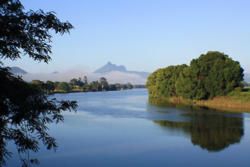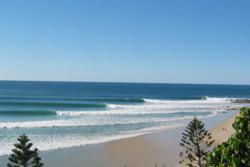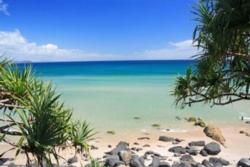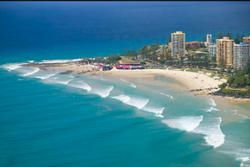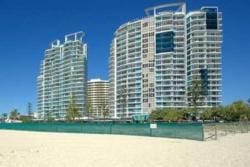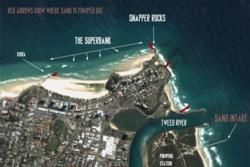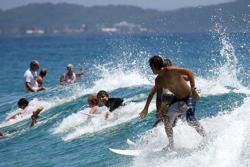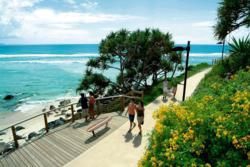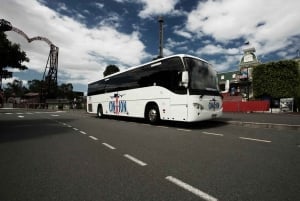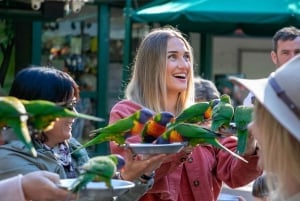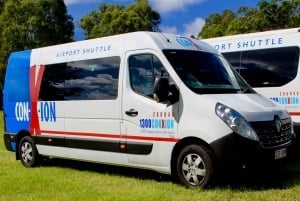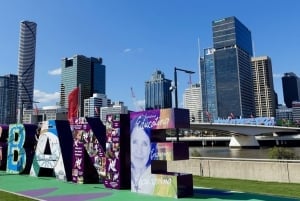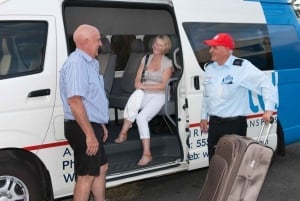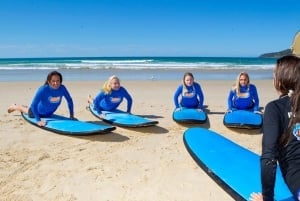Coolangatta (Cooly) and Tweed
Exploring the beauty of Australia
Coolangatta (named after the schooner Coolangatta which was wrecked there in 1846) is the most southern suburb of the Gold Coast. It happily shares its identity with its neighbouring "Twin Town" of Tweed Heads. The Gold Coast Airport, formerly known as Coolangatta Airport, is a five minute drive away, with its main runway crossing the border into New South Wales. It is here at Coolangatta and its surrounding beaches that you will find a surfing "utopia" the equal of any in the world. The surfing here is simply legendary.
Coolangatta ("Cooly" to the locals) is at the southern end of the long strip of Gold Coast beaches beginning at Main Beach forty kilometres to the north. Coolangatta and Tweed Heads (literally a step across the border into New South Wales) have a shared history based on the Tweed River which today supports a thriving fishing fleet, and the seafood is a local specialty. Coolangatta and nearby Tweed have historic links that go back to Captain James Cook (Royal Navy) who named nearby Point Danger and Mount Warning as he sailed up the east coast of Australia in 1770. The Tweed River was developed as a port from the 1830s to ship cedar. In early land surveys of 1883, the Twin Towns of Coolangatta and Tweed Heads were laid out on each side of the border.
Coolangatta first attracted holiday makers in the 1880s with visitors from Brisbane and northern New South Wales gravitating to the idealic beaches annually. It was in fact the original hot spot holiday destination before Surfers Paradise. It was at Coolangatta that locals formed Queensland’s first surf life saving club – "Tweed Heads & Coolangatta SLSC", at Greenmount Beach in 1911. It was soon after this that the original guest houses were built on the beachfront in the area.
Originally the heart of the Gold Coast, today Coolangatta is the Southern Gold Coast’s Central Business District. However it has a vibrant on the move atmosphere with an abundance of local shops, restaurants, alfresco cafes, dining, live entertainment, cinemas and beachfront markets. Some of the best accommodation on the Gold Coast can be found in this area.
This area is blessed with the north facing beaches of Coolangatta, Greenmount and Rainbow Bay which are popular swimming and surfing beaches. Walking tracks connect the headland between Rainbow Bay and Coolangatta. They form part of the Southern Points Promenade and Gold Coast City Councils’ oceanway network of 36km’s of walking/bike tracks. Some of the best views of the Gold Coast can be enjoyed on the beachside walking path from Point Danger lighthouse to Tugun beach.
Coolangatta is home to lots of activities. There are dive sites at Kirra and Cook Island to the south. You can stand on Point Danger to spot dolphins, watch circling birds, and marvel at migrating humpback whales. Coolangatta is also home to the "Cooly Rocks On Festival" Australia's Leading Rock & Roll Nostalgia Event. At Coolangatta you can uniquely enjoy two New Years Eve celebrations and two New Year’s Eve fireworks displays, the first at 11pm Queensland time, as New South Wales rings in the New Year an hour ahead of Queensland. You can also look north along the coastline to see displays at Surfers Paradise as they celebrate the midnight hour.
Coolangatta has a broad white sandy beach that stretches over a kilometre. Greenmount, a small, rocky, tree-lined headland and sheltered beach sits at the southern end. It is patrolled year round and is ideal for families, novice swimmers and surfers. Take a short walk around Greenmount headland and you might see some of the dolphins that inhabit this area. They are often spotted playing and surfing in the waves off the headland. Not to be missed are Coolangatta’s beachfront markets, held on the second Sunday of every month. They are a popular local attraction and a great day out. Around 150 stallholders display hand-made arts and crafts, as well as fresh regional produce and delicious foods.
Coolangatta and its beaches rightly lay claim to some of the world’s best surfing. The most difficult surf break is at Port Danger. Here you will find Snapper Rocks, originally best known as a fishing spot it is a small rocky outcrop on the northern side of Point Danger. It is now a famous surf break and today the start of the large sand bank known to surfers as the "Superbank" surf break a world-class sandbar surf break. This Superbank extends from Snapper Rocks Point, through Rainbow Bay, Greenmount Point, Coolangatta and Kirra, for a distance of around 2 km. The quality of the surf is now of legendary status with one of the longest, and most consistent waves in the world. Today the Snapper Rocks Superbank can be the most crowded wave in Australia, and on any given day you'll see some of the best surfers in the world surfing like there's no tomorrow. When the swell and wind combine together, it's possible to ride a wave all the way down to Kirra - well over a kilometre away. For the lucky few who manage such a ride, it's a personal feat of surfing greatness. It is therefore not surprising that Snapper Rocks attracts a fair crowd including surfers from all over the world who compete with the locals for a slice of the action. Anything up to 200 surfers can be seen over the 2 kilometre distance, with multiple "drop-ins" and at times an aggressive atmosphere. The Quiksilver and Roxy Pros world surfing championships are based at Snapper Rocks in February/March each year.
However this rugged headland of Point Danger and Snapper Rocks gives way to delightful Rainbow Bay where gentle surf offers a safe haven for small children. Captain Henry John Rous named Rainbow Bay in 1828 after his ship, the 28-gun frigate HMS Rainbow. Nestled between Greenmount Hill and Snapper Rocks, Rainbow Bay is a frontrunner for the Gold Coast's best beach. Not only is it naturally beautiful, Rainbow Bay has something for everyone be it surfers, families, sun-lovers, or swimmers. The variety of waves means everyone can have their time and enjoyment in the surf. There is lots of white water for learners to gain confidence on. Lifeguards patrol a flagged safe area.
Nearby Greenmount Beach also offers gentler breaks suited for beginner surfers. Out of the water and off the beach trees provide loads of shade along the foreshore where children can enjoy a variety of playground equipment.
Kirra Point is also famous and popular with more experienced surfers. This was the original legendary surfing spot that helped make the area famous for surfing. This small rocky headland separates Kirra beach to the north and Coolangatta beach to the south, and is noted as one of the world's premier surf breaks. Kirra Beach itself however also offers waves for beginners not just champion surfers. Home to Queensland's first surf club formed in 1962, this region has been a training ground for many surfing greats.
Although it could be said that the main emphahsis for the Coolangatta region is surfing, the area provides many places for all to enjoy. It is a region rich in beautiful beaches that cater for all levels of surfing and for just enjoying the surf. But is also has some of the best walking and cycling tracks to enjoy the beachside atmosphere in a less glitzy environment and the views of the Gold Coast from the headlands are amongst the best in the region. There is an excellent array and standard of accommadation, restaurants and things to do.



